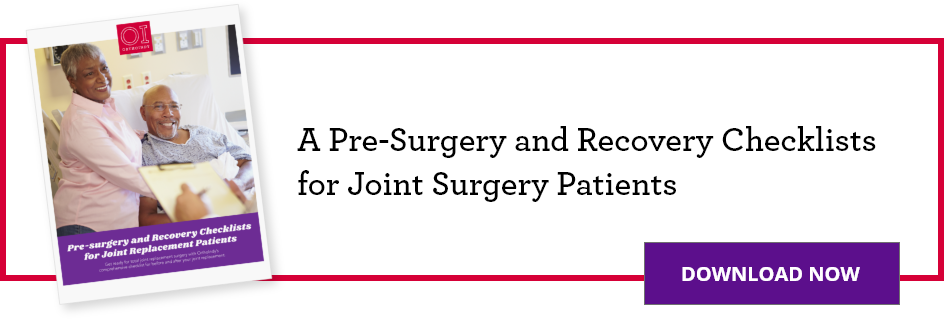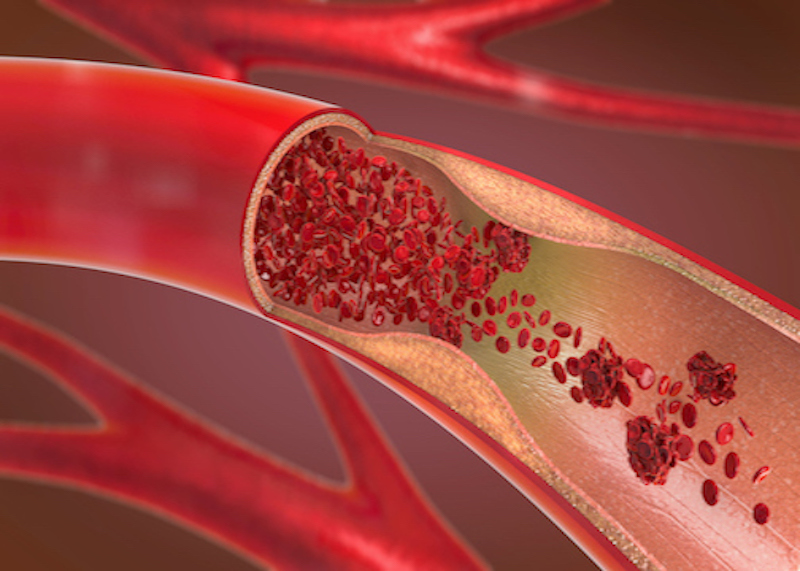THIS IS PART OF THE ULTIMATE GUIDE TO TOTAL KNEE AND TOTAL HIP REPLACEMENT
When there’s a blood clot in a vein deep in the body, it’s called deep vein thrombosis (DVT). Deep veins are found in muscles. DVT is caused by vein damage or blood flow problems within the vein.
You are more at risk of developing DVT if you experienced a lower body injury or surgery. Typically, surgeries that put you at risk are in the hips or legs, such as total knee or total hip replacement.
Deep vein thrombosis causes
There are other risk factors that put you at an increased risk of blood clots, including:
- Pregnancy
- Genetic disorders that cause blood clots
- Aging
- Smoking
- Cancer
- The use of birth control pills or hormones
- Vein diseases, including varicose veins
- Family or personal experience of a pulmonary embolism or DVT
If the clot remains in place, it can hurt the vein’s valves. If the clot does not remain in place, it can enter the bloodstream, which can cause a pulmonary embolism, if it cuts off blood to the lungs.

What are the warning signs of deep vein thrombosis?
Blood clots are the cause of deep vein thrombosis symptoms, which includes:
- Leg pain, swelling, cramps and sores
- Bulging veins
- Skin discoloration and warmth
- Thickening or tough veins, known as a cord
- It is common to not have any symptoms
What are the first signs of DVT?
A pulmonary embolism can be the first signs of deep vein thrombosis. Signs of a pulmonary embolism are:
- Chest pain
- Coughing and experiencing shortness of breath
- Coughing up blood
Deep vein thrombosis test
- A duplex ultrasound: This is the most common test for DVT. It creates images of the blood vessels and blood flow.
- MRI scan: This scan can pinpoint clots and shows veins and blood vessels but is not used frequently.
- Venography: Contrast is injected in a vein to show whether or not there are clots. This process is more invasive and less frequently used.
Deep vein thrombosis treatment
Because it is common to not have symptoms of DVT, there are ways to go about deep vein thrombosis prevention. Your doctor will use prevention therapies to prevent DVT if you are having lower body surgery. Prevention includes:
- Exercise and physical therapy after surgery
- Compression devices
- Anticoagulants (blood thinners)
If you have DVT, it usually develops two to 10 days after surgery and the risk remains for three months. Treatment will aim to stop the growth of the clot, stop the clot from escaping into the bloodstream and reduce the risk of another clot forming.
Anticoagulants can help achieve these goals by thinning the blood, which helps to ensure other clots don’t form and while getting rid of preexisting clots.
Surgery is used if the anticoagulants aren’t effective or if you are unable to take anticoagulants. In this case, a vena cava filter is placed in the vein to your heart to stop clots from reaching the lungs.
Learn more about the services offered at OrthoIndy.
Schedule an appointment
Your well-being is important to us. Click the button below or call us to schedule an appointment with one of our orthopedic specialists. If your injury or condition is recent, you can walk right into one of our OrthoIndy Urgent Care locations for immediate care. For rehabilitation and physical therapy, no referral is needed to see one of our physical therapists.





